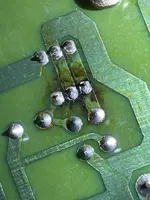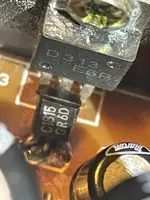j.harv
@#$%
I have a Tascam 388 set up in my home studio. I came across a spare power supply card that I had laying around, so I decided to order all new caps for it to recap. Still waiting on the caps to arrive. I thought I'd recap this spare PSU being that it's already out of the machine and swap it in when refurbished. But.... I just pulled the power supply out of my 388 and it's configured differently than my spare.
The spare, that I am going to recap, has a small black heat sink on the top corner with a transistor attached. The original PSU to the 388 im usung right now, doesn't have this. But it does have a couple resistors on the back that the spare doesn't have.
My question is can the spare PSU that I plan on recapping be used in place of the original PSU even though they look a bit different.??? Could it cause an issue?
I have included pictures. Spare PSU on the top, Original on the bottom in the first picture. Spare on the left in the second picture.
Cheers


The spare, that I am going to recap, has a small black heat sink on the top corner with a transistor attached. The original PSU to the 388 im usung right now, doesn't have this. But it does have a couple resistors on the back that the spare doesn't have.
My question is can the spare PSU that I plan on recapping be used in place of the original PSU even though they look a bit different.??? Could it cause an issue?
I have included pictures. Spare PSU on the top, Original on the bottom in the first picture. Spare on the left in the second picture.
Cheers
Last edited:



